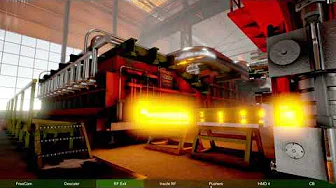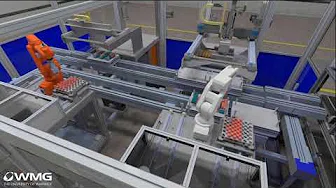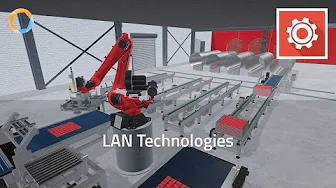
What is factory simulation?
This article hopes to provide a clear definition of simulation used for automated machines in a factory setting. This includes robots and purpose built machinery.
To give you some context, this is the magazine for this industry (also called controls, system integration, custom machinery, tooling, etc.):
What are we talking about?
There are many kinds of simulation for various purposes even within manufacturing and design. Here we are talking about simulating a manufacturing system, whether a machine, a production line or a plant (or all three combined). And we are only talking about producing discrete items, like cars or phones.
These simulations are sometimes called digital twins or virtual commissioning.
Some examples from various companies in the space:
Siemens video
ANT Automation video
Visual Components video
Prespective video
What are we NOT talking about?
Other forms of simulation often associated with manufacturing or product design are not part of this topic. These include:
- FEA (Finite Element Analysis): Used to model the strength of materials and designs.
- CFD (Computational Fluid Dynamics): Similar to FEA but for fluids.
- Process: Used to model a chemical or non-discrete "process" (power plants, refineries, food).
What SPECIFICALLY are we talking about?
Simulation of specific machinery or robots including the physical devices and their I/O (inputs and outputs such as sensors, actuators and motors).
The simulation software is used to build a model of the machine that can both show the sequencing & logic of the machine and act as a test fixture (in place of a physical machine) for the purpose of writing and testing the code (PLC or robot logic) that runs the machine.
Who are the typical users of sim?
Any of the following:
- PLC programmers
- machine builders
- system integrators (robotics, controls, PLC, SCADA)
- software developers involved in automation
How does it work?
Simulation is essentially software that connects the CAD model to the automation controller (PLC, industrial robot). It will show the CAD model moving as the real machine will.
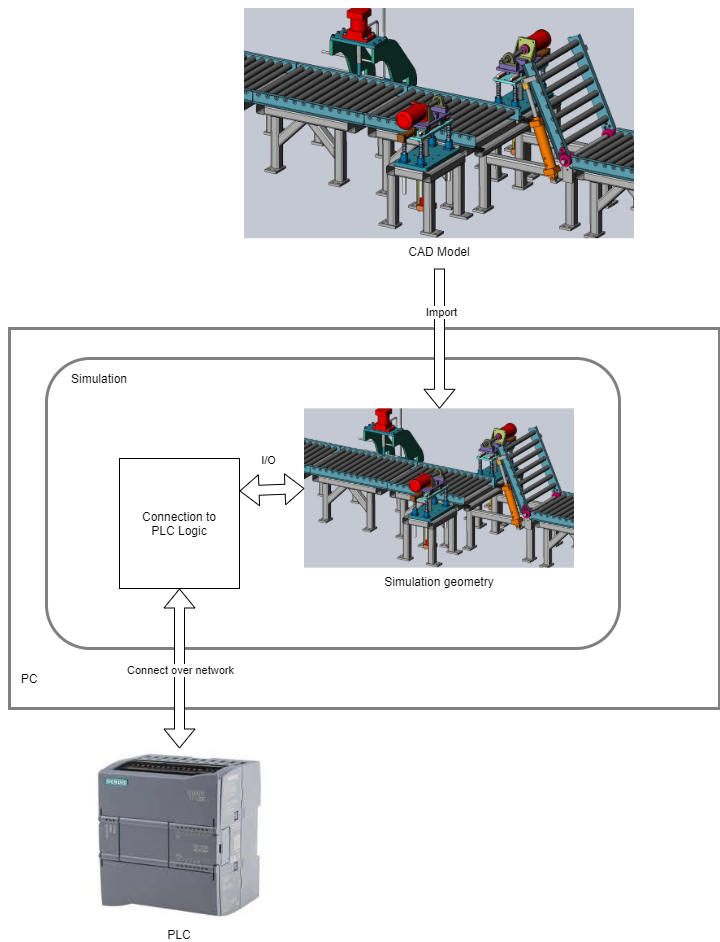
The most important feature of a simulation is the ability to switch between a time-based model and an event-based model.
Time-based simulation
Time-based simulation is used when the simulation is running off logic in the simulation in order to show the desired operation of the machine. This logic would be written in whatever language the simulation software supports (C#, Python, etc.)
Event-based simulation
Event-based simulation is used when the logic exists outside of the simulation (tyically in a PLC or robot). This is where the actual production code can be tested. We're essentially doing "hardware-in-the-loop" testing but the hardware is simulated. This is also called "virtual commissioning". The idea is that the simulation sits waiting for an event to happen. This could be by:
- pressing a "start" button (whether a hardware, HMI or simulated button).
- placing a part into the machine which activates a simulated input sensor and starts a machine operation.
The time-based model is typically used during design and demos when the production code hasn't yet been written. The event-based model is used to actually test the production code (mainly used by the developer/programmer).
Expanding on the diagram above, this looks like:
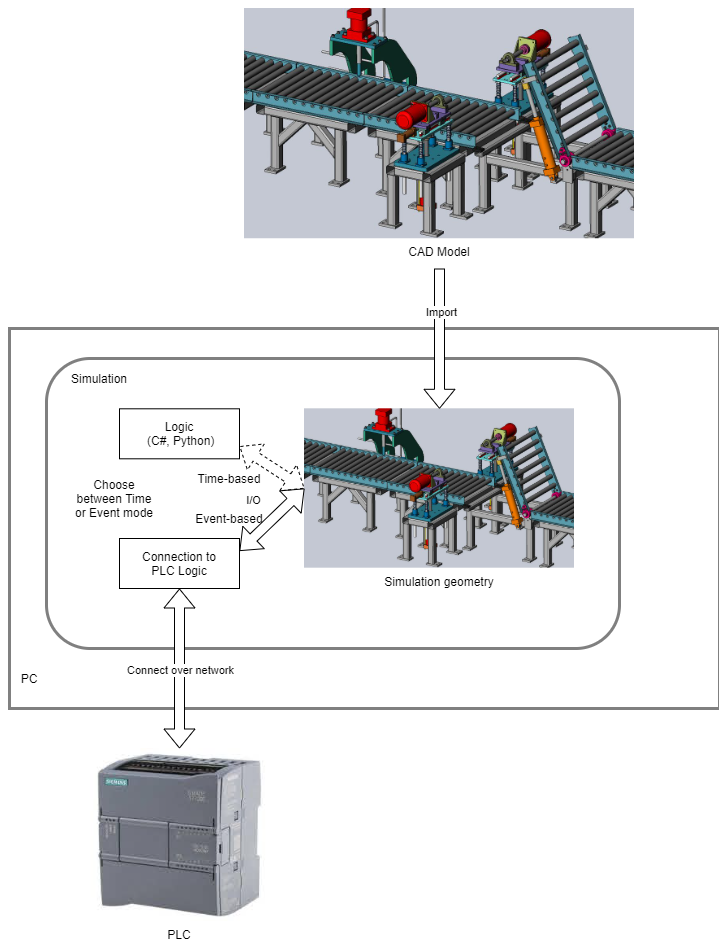
The simulation must make it easy to switch between these two modes since either could be useful at any time during design or development of the project.
Wrap up
Simulation of a machine, production line or factory is a very powerful tool. If you'd like to know more, please see the following articles in this series.

